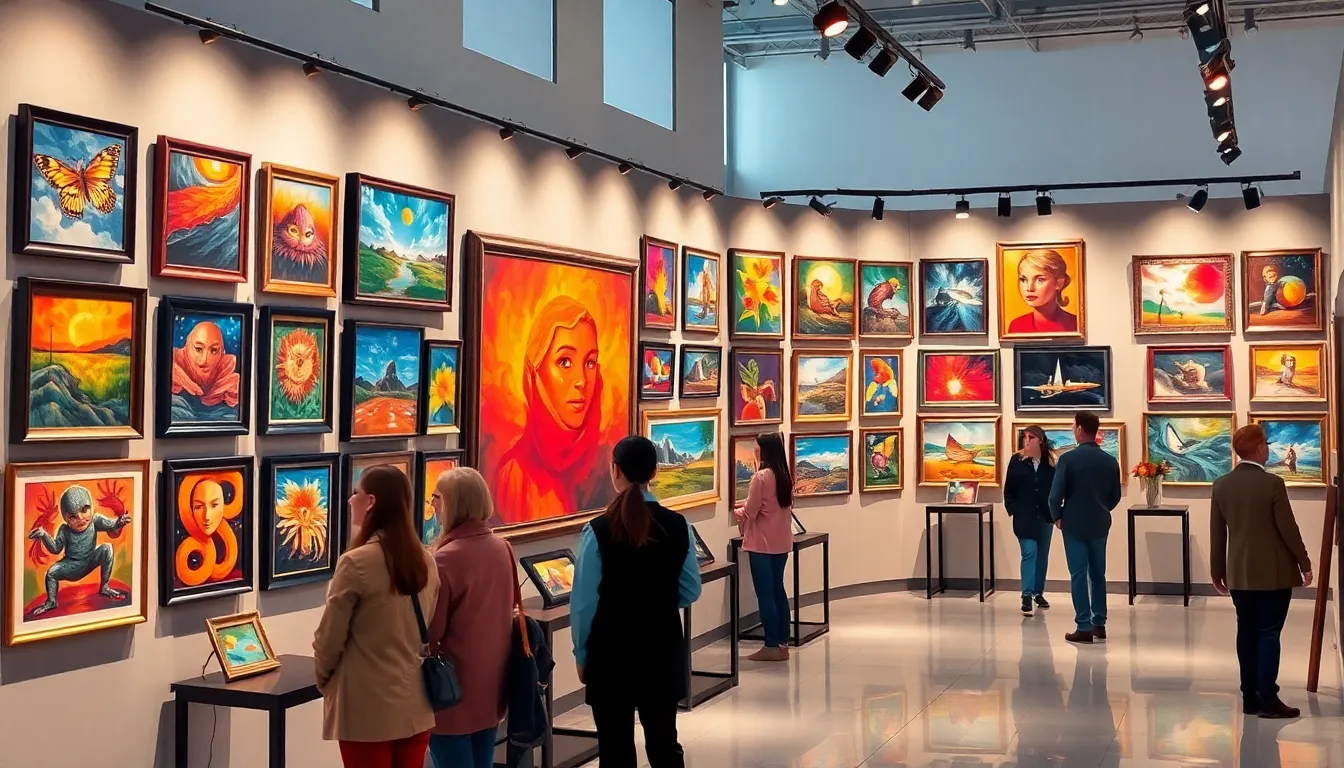Art history isn’t just for the stuffy museum-goers in berets sipping espresso. It’s a vibrant tapestry of human creativity that’s shaped our world. Imagine diving into a book that not only showcases masterpieces but also reveals the wild stories behind them. From ancient cave paintings to contemporary installations, each page is a portal to a different time and place, making art history feel less like a chore and more like an adventure.
Table of Contents
ToggleArt History Book
Art history books serve as essential resources that illuminate the ever-evolving narrative of artistic expression across cultures and centuries. Engaging with these texts fosters a deeper understanding of art’s role in shaping society.
Importance Of Art History
Art history provides context for understanding human experiences and cultural shifts. It connects past and present by revealing how art reflects societal values. Knowledge of art history enhances appreciation for various art forms, allowing observers to recognize techniques and themes. Insight gained from art history cultivates critical thinking about visual culture. Exposure to diverse artists and movements broadens perspectives, encouraging dialogue about art’s function and significance in the modern world.
Types Of Art History Books
Numerous types of art history books cater to different interests and audiences. Survey books cover broad time periods, summarizing major movements and key artists. Monographs focus on individual artists, providing detailed analysis of their work and influence. Academic texts delve into specific topics or methodologies related to art criticism and theory. Illustrated guides combine visual elements with informative content, enhancing the learning experience. Additionally, thematic collections explore particular styles, such as Impressionism or Surrealism, revealing the nuances within each movement.
Key Elements Of An Art History Book

Art history books contain essential features that enhance understanding and appreciation of art. These key elements include structure and format, as well as illustrations and visuals.
Structure And Format
Art history books often follow specific structural elements that aid in comprehension. Chapters commonly progress chronologically or thematically, providing a clear framework. Each section typically includes an introduction that sets context, followed by detailed discussions of key artworks and artists. User-friendly formats enhance reader engagement, incorporating headings, subheadings, and bullet points when needed. Notably, glossaries and indexes serve as valuable tools for quick reference. Comprehensive bibliographies link readers to further reading, enriching their exploration of art history.
Illustrations And Visuals
Illustrations and visuals play a crucial role in art history books, bridging the gap between text and artwork. High-quality reproductions of art pieces allow readers to experience the dimensions, colors, and textures of the originals. Captions accompany images, providing context about each work, including artist, title, and date. Visual timelines often help place artworks within historical contexts, enhancing understanding. Interactive elements, such as QR codes linking to virtual tours or galleries, make engaging with art even more immersive, encouraging a deeper connection with artistic expression.
Notable Art History Books
Art history offers a vast array of literature that caters to diverse interests. Readers can find classic texts that lay foundational frameworks as well as contemporary explorations that address modern issues.
Classic Art History Texts
Classic art history texts include significant works like “The Story of Art” by E.H. Gombrich. This book presents art evolution in a compelling narrative style, making it accessible to all audiences. “Art Through the Ages” by Helen Gardner remains a staple for its systematic chronology and extensive coverage of art movements. Another essential text is “Ways of Seeing” by John Berger, which challenges traditional perceptions of art and brings a critical perspective to how art interacts with society. These works collectively provide a robust understanding of historical context and artistic intention.
Contemporary Art History Books
Contemporary art history books reflect current trends and themes within the art world. “After the End of Art” by Arthur C. Danto offers insights into postmodernism and critiques the boundaries of what constitutes art today. “The Art of War” by Jiang Li investigates how art intersects with issues of conflict and power. “Art Since 1980” by Peter Halley addresses how the digital age shapes artistic practices. Each of these books reveals the complexities of contemporary art, fostering deeper discussions on how art influences and mirrors today’s society.
How To Choose The Right Art History Book
Selecting the right art history book enhances understanding and appreciation of the subject. Choices depend on personal interests and reliable information.
Consider Your Interests
Diverse interests influence the type of art history book to choose. Readers fascinated by specific periods, styles, or artists benefit from focused survey books or thematic collections. Individuals interested in broader contexts might prefer monographs or academic texts. Engagement increases when the content resonates personally, whether exploring ancient cave art or contemporary installations. Delving into a niche area can also lead to discovering lesser-known artists and movements, enriching the learning experience.
Evaluate Credibility And Reviews
Credibility plays a crucial role when choosing art history books. Reputable publishers and authors with established expertise provide reliable content. Reviews from established sources can offer insights into a book’s depth and quality. Recommendations from educators, critics, and experts guide selections. Readers often find value in user reviews that highlight strengths and weaknesses, offering diverse perspectives. Considering qualifications of authors, academic affiliations, and contributions to the field ensures selection of well-crafted, informative works.
Conclusion
Art history books serve as gateways to understanding the rich tapestry of human creativity. They offer insights into not just iconic artworks but also the cultural narratives that shape society. By engaging with these texts, readers can appreciate the intricate connections between art and the human experience.
Choosing the right art history book is essential for a fulfilling journey. With a variety of options available, readers can tailor their exploration to their interests, whether they lean towards classic foundations or contemporary critiques. This personalized approach enhances both understanding and enjoyment of the art world. Embracing art history opens up a vibrant dialogue with the past, enriching the present and inspiring future creativity.
